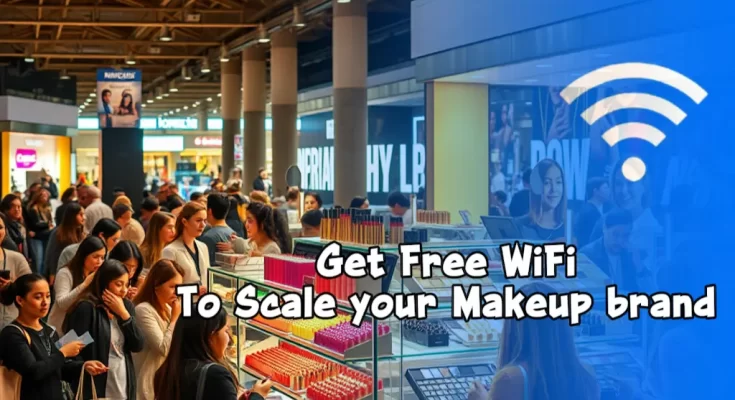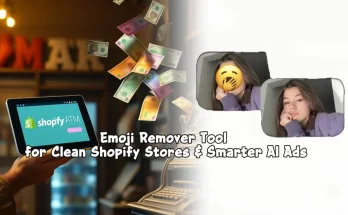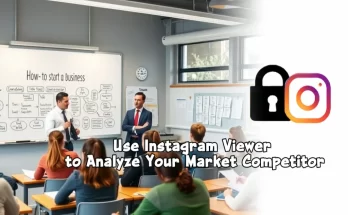Launching a Makeup Brand: Strategies for Success
Introduction to Makeup Brand and Its History
So today we’re talking about Makeup Brand. You don’t need to be Kylie Jenner to launch a makeup brand.
Makeup Brand has been shaping beauty standards for over 6,000 years and it was first made popular by the Egyptians in 4,000 BC with coal-lined eyes. Next, the Mesopotamians used crushed gemstones while the Chinese and Japanese perfected rice powder and rouge. The Renaissance women embraced bold red lips, only for Victorians to reject makeup as immoral.
By the 20th century, makeup became unstoppable. We had the flapper rebellion, the Hollywood glamour, disco boldness, 80s neon, and today’s influencer beauty boom. This video is for beauty lovers who want to make their mark in the cosmetics industry.
The Success of Modern Makeup Brands
Today, the industry has made young beauty lovers into multi-millionaires. Kylie Cosmetics has brought in over $900 million, Brandon Tru’s Doe Lashes has brought in over $300 million, Anastasia Beverly Hills has made over $600 million, and Rihanna’s Fenty Beauty has made a whopping $1.4 billion. But what’s the secret? How did these visionaries rewrite the rules of the industry?
Strategies for Creating a Successful Cosmetics Empire
I’m going to break down the exact strategies that made them successful so that you can use them to create your own cosmetics empire.
Key Steps to Launch Your Cosmetics Brand
I’m going to teach you how to create your dream product, fund it, create a culture, and make sales online and in-store. How to understand regulations, market your business, manage your inventory, scale, and hopefully sell out. The cosmetics industry used to be controlled by big players like L’Oréal and Estée Lauder, but now with technology, anyone can get easy access to manufacturers and potential customers, which means you can have a seat at the table.
Understanding the Market Potential
How many MAC Ruby Woo lipsticks do you think are sold every minute? What about every year? The answer: it was reported by Who What Wear that seven of these are sold every single minute, meaning about 3.7 million units are sold annually.
Creating a Makeup Product to Sell
So how can you actually create a makeup product to sell? Do you need to be a cosmetic chemist to start a beauty brand? Do you need to make the products yourself or have a ton of money saved up? The simple answer:
No.
You have options.
Making Cosmetics at Home
First, there are some cosmetics that are simple enough to make at home. You can actually find recipes on MakingCosmetics.com or just tutorials on YouTube. You want to make sure to keep notes of your formula so your product is consistent. But be very cautious with this. You’re going to need to follow regulations and have it lab-tested by professionals before releasing it. More on this later on.
Hiring Cosmetic Chemists for Makeup Brand
If making your own formulas is not your thing, you can find cosmetic chemists online to develop your product at places such as IFFCC.org or CosmeticFormulators.com. And you really want to make sure to verify the credentials of any chemist you hope to work with.
Working with Manufacturers
And after this, you can work with a reliable manufacturer to make your product in bulk locally or overseas. Private labeling or white labeling—ColourPop and Kylie Cosmetics both use this method to begin before they design their own products. Private labeling is basically putting a label on a product that’s already made and packed by a manufacturer. And you can find products for this in places like Blanca or Pinnacle Cosmetics. You can sometimes customize the scent or color, but it’s typically sold as is.
Benefits of Private Labeling
This is a really great method for launching quickly. It’s less about innovation and more about branding. For example, you could launch a travel beauty company or a rave beauty line this way.
Wholesale Method
Lastly, wholesale. You can curate a bunch of wholesale makeup products into one online store. For example, it could be clean beauty products or vegan beauty products.
Timeline for Launching a Makeup Brand Product
So what is the timeline for this? It’s likely going to take anywhere between 6 to 24 months to design a product from scratch and officially launch it. However, this will be much shorter if you white label or partially develop a product.
Differentiating Your Brand in the Beauty Industry
So how can you differentiate yourself in the space? With Sephora alone carrying over 340 brands, it’s important to differentiate yourself in the world of beauty. There are three big ways to do this.
Attaching Your Brand to a Lifestyle or Culture
First is attaching your brand to a strong lifestyle, culture, or movement. Think of Fenty Beauty, who redefined inclusivity in the makeup world by offering 50 shades of foundation. You want to create an experience that your customers can take part in.
Designing a Unique Product
Two, design a one-of-a-kind product that solves a unique problem. Take Doe Lashes’ reusable eye mask for example.
Creating Iconic Packaging
Three, create iconic packaging like Flower Nose—something that makes people take a second look. You can use one or all of these methods.

Anastasia Suare’s Eyebrow Revolution
Did you know that there is a perfect formula for eyebrows? Anastasia Suare became the first to apply the golden ratio principle to eyebrow shaping at a time when eyebrows were kind of an afterthought. She proved how powerful they were in framing faces. Her technique became the gold standard, turning brows into a must-have step in every girl’s makeup routine. Now we shape them, brush them, and fill them in. She created a culture we can all learn from.
Identifying Your Target Demographic
Let’s talk about your target demographic. Trying to sell to everyone will result in ultimately selling to no one. This is why it’s really important to choose your people. Who are you going to serve with your cosmetics brand? Here are a few ways to find your ideal clients.
Finding an Underserved Group
Find an underserved group of people or a gap in the market. For example, girls with sensitive skin or accessible beauty products for people with disabilities. Cole’s one-handed applicators serve this market beautifully.
Understanding Your Target Demographic
You want to find out your target demographic’s age, their income, their gender, interests, lifestyle, and their location. Try to know them better than they know themselves by figuring out their pain points, dreams, and desires, and then go to work on solving them. If you can’t think of a specific group of people right now, what can you identify with that is missing in your own life that maybe you can help others with too? This is what Kylie Jenner did when she made her two-piece lip kits. Finally, a lip gloss and liner together—super simple and practical.
Building an Unforgettable Cosmetics Makeup Brand
How do you build an unforgettable cosmetics brand? One word: culture. This is what is behind all multi-million-dollar brands. They play on our psychological need to be a part of the strongest community. If they can create a strong culture, people will pay loads of money just to be associated with it.
Case Study: Shane Dawson and Jeffree Star
The record-breaking makeup launch was actually masterminded by two YouTubers, Jeffree Star and Shane Dawson. But how did they do it? Shane Dawson, known for his documentary-style deep dives, created an eight-part docu-series on Jeffree Star, racking up millions of views as fans eagerly awaited each episode. But what many didn’t realize at first was that the entire series was more than just a behind-the-scenes look at Jeffree’s life. It was a massive marketing play leading up to the launch of their Shane x Jeffree Conspiracy Collection.
The Success of the Conspiracy Collection
The collection sold out entirely within hours, and over 1 million eyeshadow palettes were sold within 30 minutes after the launch. They created a movement, and when customers purchased the product, they became a part of it.
Creating a Culture with Your Makeup Brand
So how can you create a culture with your brand? First, dive into your niche market. This is a subset of a larger market. For example, Mele Skincare found its niche in skincare exclusively for melanin-rich skin.
Defining Core Values
Next, you want to define your core values. Is it self-love, inclusivity, confidence, boldness?
Attaching to a Lifestyle
Next, you want to attach yourself to a lifestyle such as minimalistic beauty or workout culture. Make this obvious throughout everything you do—your social media, your website, and your partnerships. Stand for something bigger than just a product. Get your brand involved in things that your target demographic cares about, like Rare Beauty donating to mental health initiatives and fostering open conversations around the topic.
Using Storytelling
Use storytelling. We learn and connect through good stories, so you want to share your “why” and it should be integrated into everything you do. Create brand rituals or exclusive experiences. For example, you could do limited edition drops, beauty memberships, or even just a new way to use a product.
Engaging the Senses
Use the senses to tell your brand story. Use visuals and colors, sounds, smells, flavors, and feelings that align with who you are as a brand. This way, that experience will now be synonymous with your brand.
Building Your Website
Build a website to host your products, your story, and your values. Your website is like your store, so the goal is to make it a pleasant experience for your customers—somewhere they want to stick around and shop for a long time. Shopify is genuinely the perfect place to set up your online cosmetic store. This is why huge makeup moguls like Fenty Beauty, Kylie Cosmetics, ColourPop, Morphe, E.L.F., Rare Beauty, and Jeffree Star all use the platform.
Using Shopify for Your Cosmetics Brand
Shopify has the perfect ready-made website templates for selling your products. You get to use your website to showcase the experience of using your products. You want to showcase videos and photos of applying it and making detailed product descriptions with things like textures, ingredients, benefits, and the way things feel. Here are a few free apps to add to your Shopify store to help with your cosmetics brand. You can embed photo reviews with the Judge.me app, you can embed a live Instagram feed with the Instafeed app, and you can use the WhatMore app to create shoppable videos.
Ingredients and Labeling
Okay, let’s talk about ingredients and labeling. Cosmetics are being applied to the skin, so it can feel like an intimidating field to get into. Just remember, pain is beauty. Okay, here we go. Take a deep breath. Instant eye lift—wow. So to cover all your bases, you want to refer to your local regulations around how skincare can be manufactured, tested, labeled, and marketed in your area. If you’re white labeling a product, research suppliers and the ingredients thoroughly to make sure the claims that they are making are 100% accurate.
Hiring Third-Party Firms
You can also hire a third-party firm to do an audit on any suppliers or vendors before you start working with them. It’s important that the ingredients in your product are skincare-grade in your country. You also want to think about what preservatives you’re going to use because without the right preservatives, products can become contaminated and dangerous, and we do not want that. Are you going to make organic claims? Well, if you are, it’s important to chase the supply chain and make sure that they give references for all of their claims.
Checking for Common Allergens
Lastly, you want to check if any of the ingredients that you’re using are common allergens. EWG.org/SkinDeep is a really great resource for this, but it’s still best to refer to the official government sources when it comes to ingredients.
Packaging Your Products
Let’s talk packaging. Packaging is super important. You need to figure out what your biggest packaging needs are and prioritize this. So you can find pre-made packaging to put your labels on, or you can work with a manufacturer to design custom packaging.
Testing Your Packaging
It’s vital to test out your packaging before going to market. Megan Cox had a rough journey with using the wrong packaging for a Millie Beauty. She discovered that the glue in her brush applicator was not compatible with her brand’s eyelash serum, so the bristles began falling out. A quote from Megan Cox herself: “Packaging was a really big issue for me. I lost a lot of customers because it was unreliable.” Look at the Flower Nose packaging for example. It is super unique and sells itself. People want to buy the product just to have that packaging sitting on their shelves. Look at their nine-color eyeshadow palette or their Strawberry Loco Cloud Lip Cream. I feel like I’ve been transported into a whole new world by just looking at it.
Distributing Your Products
Okay, let’s talk about distribution. How can you get your products into stores like Sephora or Ulta? Your cosmetics have to go on a journey to make it into retail stores. They start at the manufacturer, then they can be sold directly to consumers or potentially go to distributors and be shipped to the retailers. So you can personally reach out to small retail stores to get your products in at first. This method is such a good idea because you can sell to retail stores in bulk, and they’re also going to help sell it and market it to their customer base. This is a huge win.
Working with Distributors
One thing that can help with this process is working with a distributor. They can help connect you to retail stores, manage shipping and inventory, and help with your store relationships. They can be expensive though, so it’s kind of a give-and-take situation. Another great method for this is using wholesale marketplaces like Faire.com and Get Ko to connect with retailers. You can attend beauty trade shows and network there, and lastly, you can apply to indie cosmetics programs at Sephora, Ulta, and Target.
Managing Your Beauty Inventory
Next, let’s talk about managing your beauty inventory. You’re likely going to have a lot of beauty products, so how will you store them? Here are some tips. It’s really good to order smaller quantities to start and also pay attention to the shelf life and make sure they sell out in time and do not go bad. You’ll need to watch the temperature and humidity and make sure your products are stored away from the heat, the sun, or moisture. These things can completely ruin your Makeup Brand products.
Labeling and Organizing Products
Lastly, label and organize all your products with sticker labels so you know where everything is and you’re not fumbling around a bunch of Makeup Brand products.
Funding Your Cosmetics Business
Next, let’s discuss how to fund your business. So how much does it actually cost to start a cosmetics brand? So it’s a kind of wide range, but you can start your brand with anywhere from $1,500 to $100,000. This is totally dependent on your personal audience size and your goals. The average startup cost is around 5 to 10K to start. As an example, Leslie and Johanna started with a pretty small investment with Five Cosmetics, taking out a $10,000 loan to start.
Investment Advice from Huda Kattan
When it comes to investing, here is some advice from Huda Kattan: “Doing less but focusing in more, you get so much more power.” She also says, “Being scrappy is one of the best qualities that you can have as a founder.”
Marketing Your Cosmetics Business
Now that you’re ready, here are some tactics for marketing your business. Figure out where your client base would hang out and put yourself there—trade shows, social media, events, anywhere they are. Next, partner with beauty influencers and send them PR packages to post. A lot of large beauty companies got their start this way.
Utilizing Social Media Marketing
Utilize social media marketing such as organic content or even paid ads on Instagram, Facebook, and TikTok. Make sure to tell your story and share your process. And when making content, begin with a problem and end with a solution. You can also hire out UGC creators for this too.
Creating Pop-Up Events
Create pop-up events where clients can try your products and get samples.
Building a Personal Brand or Makeup Brand
And lastly, build a personal brand. Create free makeup content and become an authority in the space. That way, when you launch, people are going to be running to purchase your products.
Scaling Your Cosmetics Business
Lastly, let’s talk about scaling your business. Although Millie Bobby Brown launched her product in stores such as Ulta, her Gen Z audience actually preferred shopping online. She was clever and made TikTok one of her top marketing strategies, and according to Glossy, TikTok now brings in most of their sales. She scaled by going to new channels, and what’s most important is going to channels where her audience was hanging out.
Anastasia Suare’s Journey to Success
Anastasia Suare was a Romanian immigrant and esthetician. She started by shaping eyebrows for everyday clients before her incredible talent spread to Hollywood’s biggest celebrities, all through word of mouth. Then she scaled her business by developing a breakthrough eyebrow product called Brow Wiz. She reinvested her profits and scaled her brand into a global makeup empire. Scaling means paying attention to where people are buying and where people are not. Once you hone in on what’s working and you double down, things will take off.
Adding New Income Streams
It also means adding new income streams or making new products for people to buy. This could be expanding into new markets, introducing complementary products, or even upselling with bundles.



